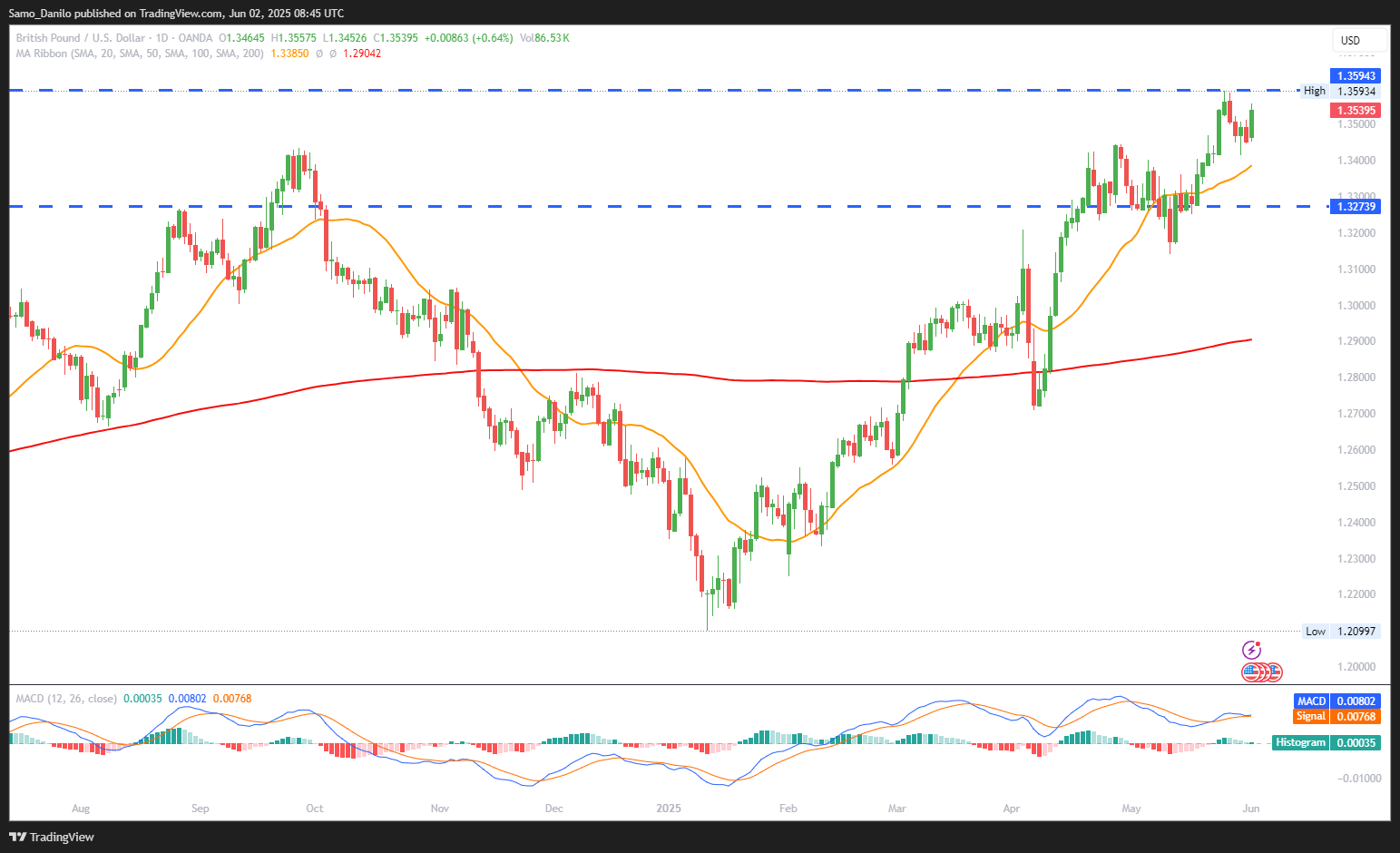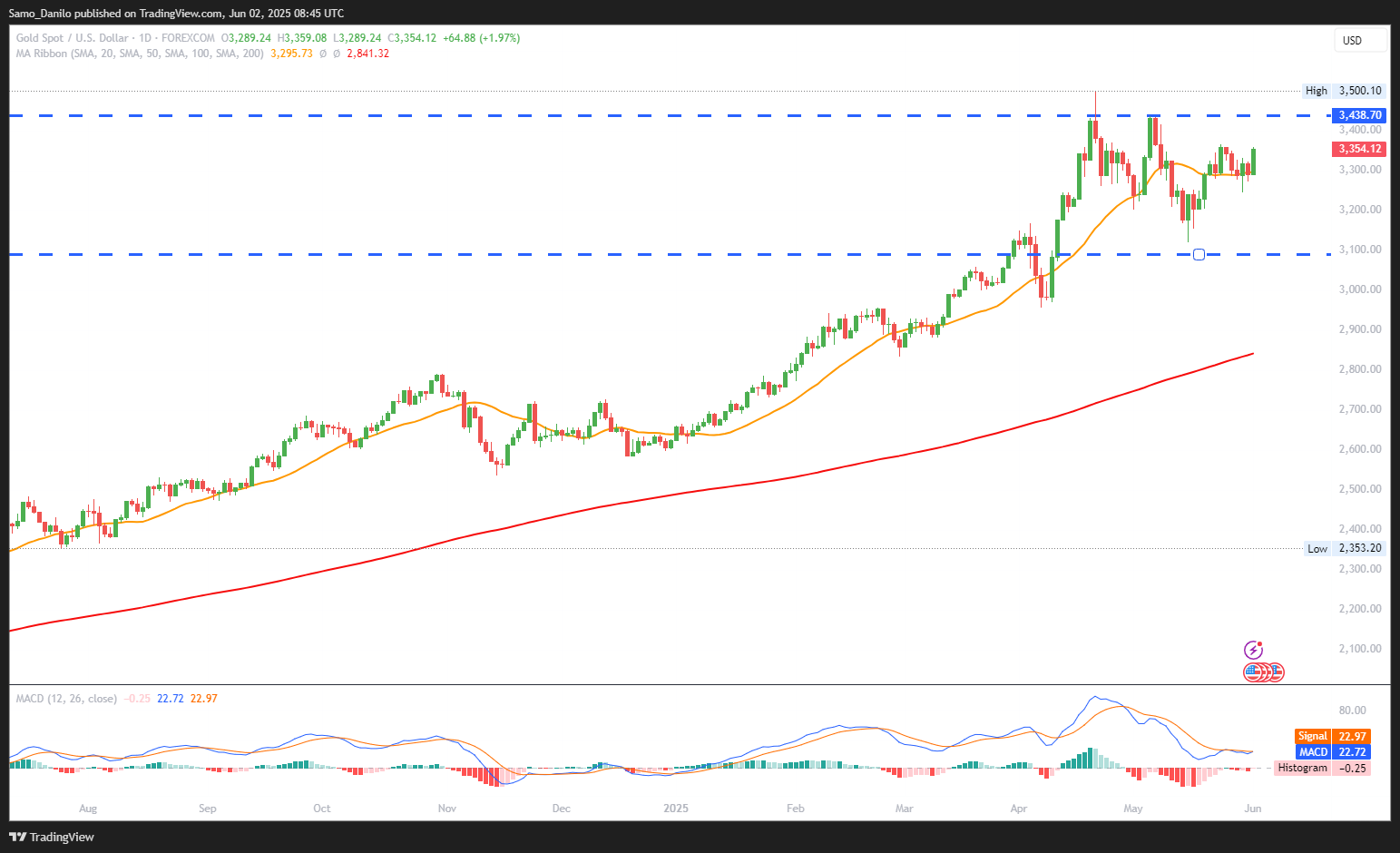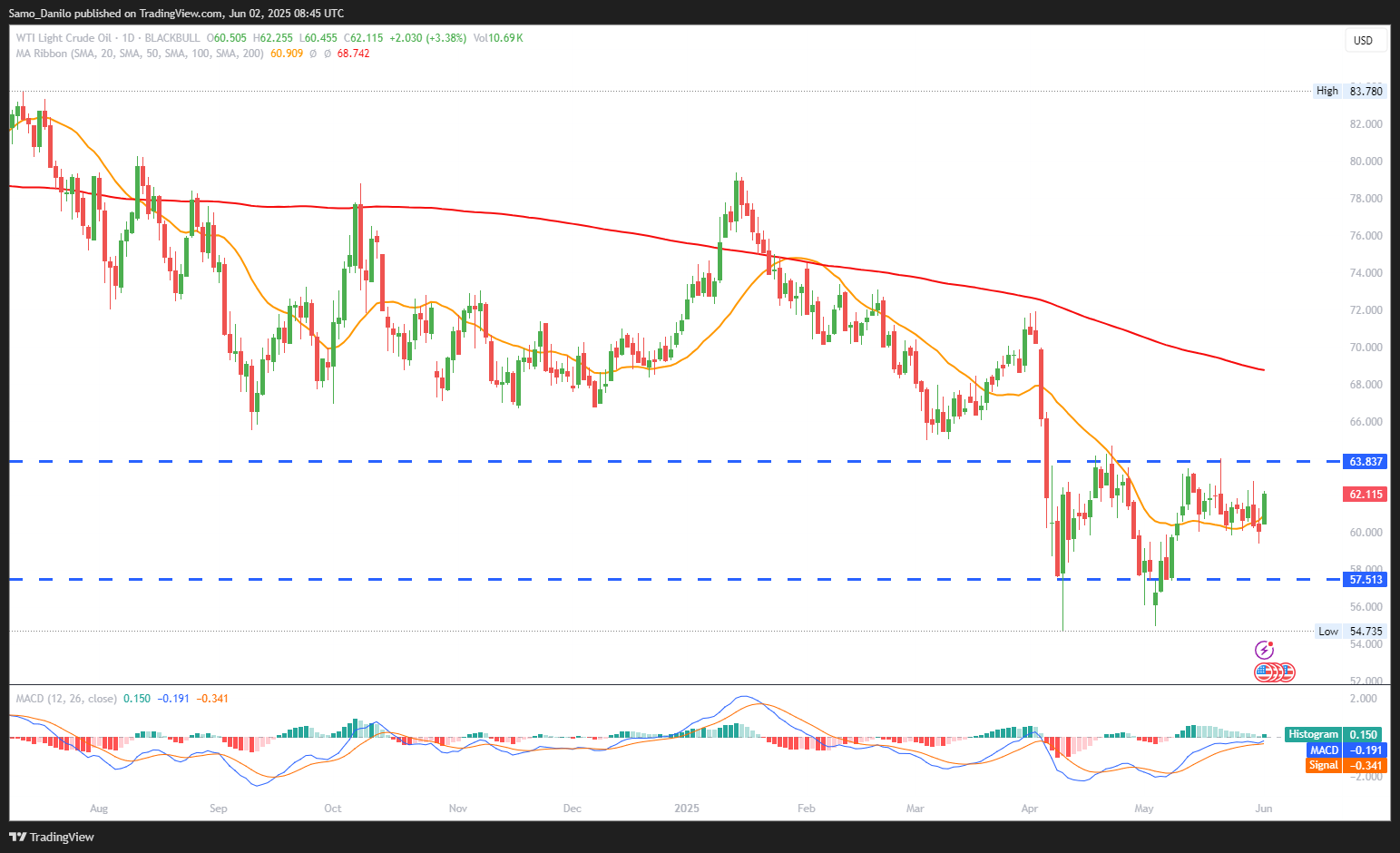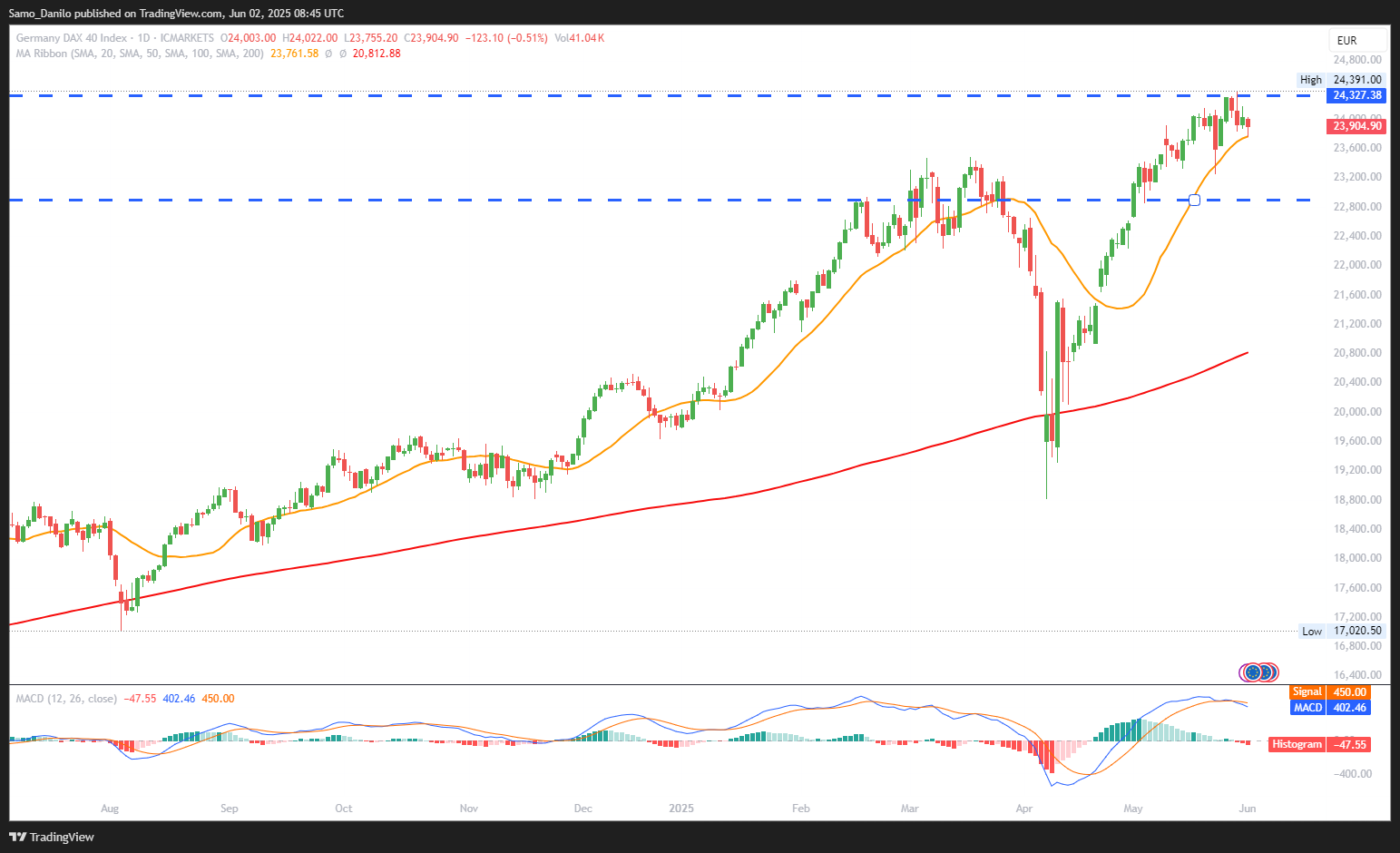EURUSD
- EUR/USD Price: The EUR/USD pair surged during Monday’s European session, climbing toward 1.1420, its highest level in weeks. The move follows a sustained uptick in Euro buying interest, driven by mounting transatlantic trade tensions and a broadly softer US Dollar.
- Tariff Hike: US President Donald Trump’s plan to double tariffs on steel and aluminum imports reignited fears of a trade war. In response, the European Commission vowed to retaliate, triggering a flight from the USD and pushing investors into the Euro as a geopolitical hedge.
- EC Reaction: The European Commission vowed to retaliate, triggering a flight from the USD and pushing investors into the Euro as a geopolitical hedge.
- ECB’s Knot: ECB Governing Council member Klaas Knot flagged a murky inflation outlook, suggesting policymakers face difficulty committing to a clear rate path. His comments reflect uncertainty at the ECB over whether to continue policy normalization amid external shocks.
- ECB's Villeroy: In contrast, ECB official François Villeroy de Galhau maintained that policy normalization in the Eurozone is “probably not complete,” hinting at room for further tightening if price pressures persist. The divergence in tone reflects an internal ECB debate on forward guidance.
Closing statement: EUR/USD strength is fueled by US-EU trade escalation and diverging central bank rhetoric, with the Euro reclaiming ground as a perceived safe-haven alternative to the Dollar. If the tariff standoff intensifies and ECB policy remains data-dependent but firm, EUR/USD could target the 1.1450–1.1500 resistance zone in the near term.
GBPUSD
- GBP/USD Price: The GBP/USD pair extended its intraday gains past the 1.3500 level during Monday's European session, buoyed by renewed USD weakness driven by waning Fed rate hike bets and rising US fiscal concerns.
- US PCE Index: Friday’s release of the PCE Price Index—the Fed’s preferred inflation gauge—signaled slowing inflation, reinforcing expectations that the Fed may pursue further policy easing in the coming months. This pressured the Dollar across the board.
- BoE Policy: The British Pound remains relatively strong amid market sentiment that the Bank of England (BoE) will likely pause rate cuts at its June 18 meeting, signaling a more cautious approach to policy easing compared to the Fed.
- US-China Trade: Global risk appetite was dented after President Trump accused China of failing to honor the Switzerland trade agreement, reviving concerns about stalled progress in US-China relations and contributing to further Dollar downside.
- US Data: Investors are now looking ahead to a packed US economic calendar, beginning with the ISM Manufacturing PMI due later Monday. These releases could offer fresh directional cues for the Dollar and, by extension, the GBP/USD pair.
Closing statement: With dovish Fed expectations, BoE policy restraint, and renewed US-China tensions, GBP/USD is finding support above 1.3500. If US data disappoints and the BoE maintains its cautious tone, the pair could target the 1.3550–1.3600 range in the near term.
XAUUSD
- XAU/USD Price: The XAU/USD pair rose to a fresh daily high near $3,350 during Monday's European session, supported by safe-haven demand and a broadly softer US Dollar. The upward momentum continues to reflect a flight to safety amid global geopolitical tensions and monetary policy expectations.
- Fed Rate Cut: Markets are pricing in a rate cut by the Federal Reserve in September, with a second cut potentially in December. These expectations are reducing opportunity costs of holding non-yielding gold, thus supporting demand.
- Fed's Waller: Despite tariff-driven inflationary risks, Fed Governor Christopher Waller reiterated that rate cuts remain likely later this year, helping to anchor gold’s upside by diminishing real yields.
- Escalation in Ukraine: Ukraine’s massive drone assault on Russian airfields—targeting over 40 military aircraft—marks a major escalation just ahead of new peace talks in Istanbul. This geopolitical risk has fueled increased investor interest in gold as a risk hedge.
- Middle East Tensions: Tensions in Gaza flared once more, with conflicting reports over a deadly aid incident. Israel and Hamas exchanged blame, keeping the region on edge and reinforcing gold’s role as a geopolitical risk hedge.
Closing statement: With mounting geopolitical risks, dovish Fed expectations, and strong safe-haven demand, gold remains well-supported around $3,350. Sustained tensions and softening rate outlooks could drive XAU/USD toward $3,375–$3,400 in the near term.
CRUDE OIL
- Crude Oil Price: West Texas Intermediate (WTI) crude oil is holding steady around $62.00 during Monday’s European session. While price action has stabilized, upside momentum remains capped by macroeconomic uncertainty and supply developments.
- Trump Tariffs: US President Donald Trump’s renewed trade rhetoric, accusing China of breaching their agreement, has revived concerns about global growth, casting a bearish shadow over oil demand expectations and limiting crude's upward potential.
- OPEC+ Announcement: OPEC+ confirmed it will boost production by 411,000 bpd in July, following previous increases in May and June. The decision reflects the group’s confidence in demand resilience but could weigh on prices if global consumption disappoints.
- Crude Stockpiles: Despite bearish sentiment, US crude stockpiles unexpectedly declined by 2.8 million barrels last week—bucking forecasts for a build. This drawdown offers near-term support to oil prices, suggesting tighter domestic supply conditions.
- Manufacturing Data: Traders now shift focus to the upcoming ISM Manufacturing PMI for May, set for release later Monday. The data will be crucial in gauging US industrial demand for crude and could influence short-term price direction.
Closing statement: Crude oil remains in a tug-of-war between demand-side macro fears and supply-side surprises. A decisive break above $62.50 would require upbeat US economic data and easing trade tensions, while disappointment on either front could push WTI back toward $60.00–$61.00 support.
DAX
- DAX Price: The DAX rose 0.27% on Friday, May 30, closing at 23,998, partially offsetting Thursday’s 0.44% decline. The rebound reflected renewed investor optimism, driven by soft inflation data and growing rate cut expectations.
- Retail Sales: German retail sales fell 1.1% MoM in April, reversing a 0.9% gain in March. This unexpected contraction highlights sluggish consumer demand, reinforcing the case for monetary easing by the ECB.
- Inflation Data: Germany’s headline inflation dropped from 2.2% to 2.1% in May, bringing it closer to the ECB’s 2% target. The moderation in inflation has amplified expectations of multiple rate cuts, bolstering sentiment toward equities, especially interest-rate-sensitive DAX constituents.
- PMI Data: Markets are eyeing the finalized HCOB Manufacturing PMI for May, due Monday, with the flash reading showing an improvement to 48.8 from 48.4 in April. Though still below 50, a better-than-expected figure may help cushion recession concerns.
- US Data: Later on Monday, traders will shift focus to US ISM Manufacturing PMI, expected to remain unchanged at 48.7. The release could influence global risk sentiment and set the tone for early-week DAX price action.
Closing statement: The DAX remains underpinned by cooling inflation and dovish ECB expectations, though soft consumer data and sub-50 PMIs caution against over-optimism. If upcoming PMI readings surprise to the upside, the index may attempt a fresh move above the 24,000 mark, testing record highs.




